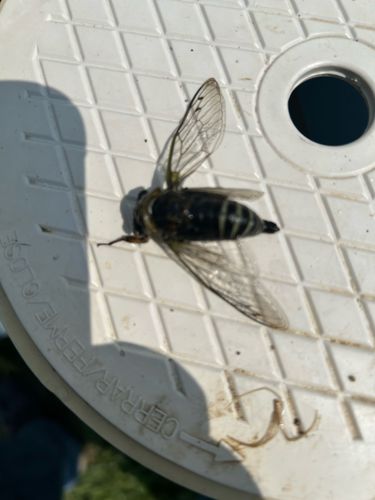Cicada
Scientific Name: Various genera within Cicadidae (e.g., Magicicada, Neocicada, Tibicen)
Order & Family: Order Hemiptera, Family Cicadidae
Size: Typically 1 to 2 inches (2.5 to 5 cm) in body length, with some species reaching up to 4 inches (10 cm).

Natural Habitat
Cicadas are found in temperate and tropical regions worldwide, primarily in forested areas, woodlands, and suburban landscapes where trees and shrubs are abundant. Nymphs live underground.
Diet & Feeding
Adult cicadas feed on tree sap using their piercing-sucking mouthparts. Nymphs feed on xylem fluids from the roots of trees and woody plants.
Behavior Patterns
Adult cicadas are known for their loud, distinctive songs produced by males to attract mates. They typically emerge en masse during specific periods, sometimes every few years (periodical cicadas) or annually (annual cicadas). Nymphs live underground for years, feeding on roots, before emerging, molting into adults, and living for only a few weeks.
Risks & Benefits
Risks: While harmless to humans (they do not bite or sting), large emergences can cause cosmetic damage to young tree branches when females lay eggs. Benefits: Cicadas are a food source for various animals (birds, mammals, reptiles), their tunneling activities can aerate soil, and their decomposition contributes to nutrient cycling.
Identified on: 8/8/2025